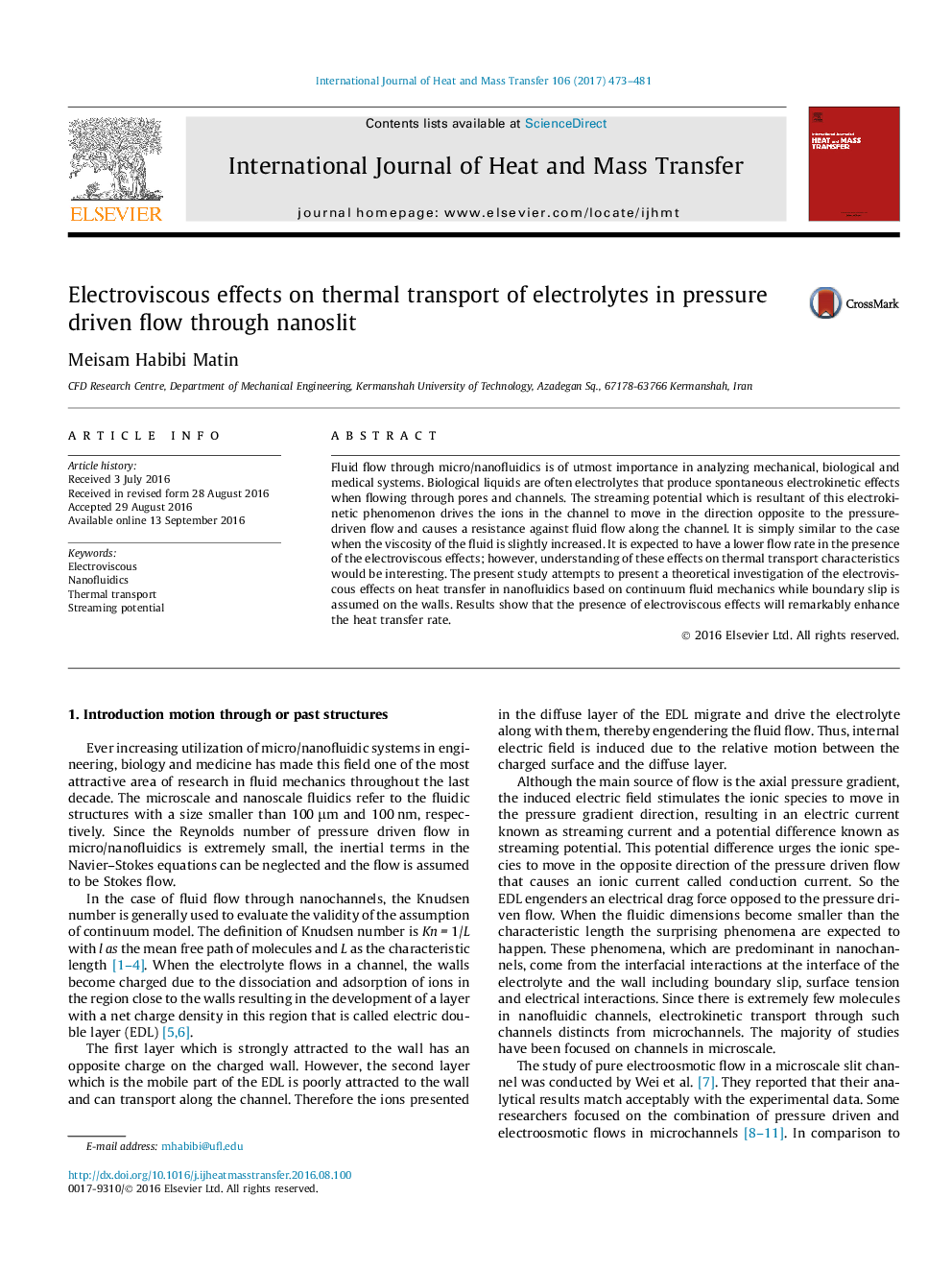| Article ID | Journal | Published Year | Pages | File Type |
|---|---|---|---|---|
| 4994781 | International Journal of Heat and Mass Transfer | 2017 | 9 Pages |
â¢As the EDL grows, thermal efficiency of the channel is reduced.â¢For slip flow heat transfer rate is higher than the flow without boundary slip.â¢The electroviscous effects would be an advantage for heat transfer enhancement.â¢By increasing wall potential or Brinkman number the Nusselt number is increased.
Fluid flow through micro/nanofluidics is of utmost importance in analyzing mechanical, biological and medical systems. Biological liquids are often electrolytes that produce spontaneous electrokinetic effects when flowing through pores and channels. The streaming potential which is resultant of this electrokinetic phenomenon drives the ions in the channel to move in the direction opposite to the pressure-driven flow and causes a resistance against fluid flow along the channel. It is simply similar to the case when the viscosity of the fluid is slightly increased. It is expected to have a lower flow rate in the presence of the electroviscous effects; however, understanding of these effects on thermal transport characteristics would be interesting. The present study attempts to present a theoretical investigation of the electroviscous effects on heat transfer in nanofluidics based on continuum fluid mechanics while boundary slip is assumed on the walls. Results show that the presence of electroviscous effects will remarkably enhance the heat transfer rate.
Graphical AbstractDownload high-res image (122KB)Download full-size image
